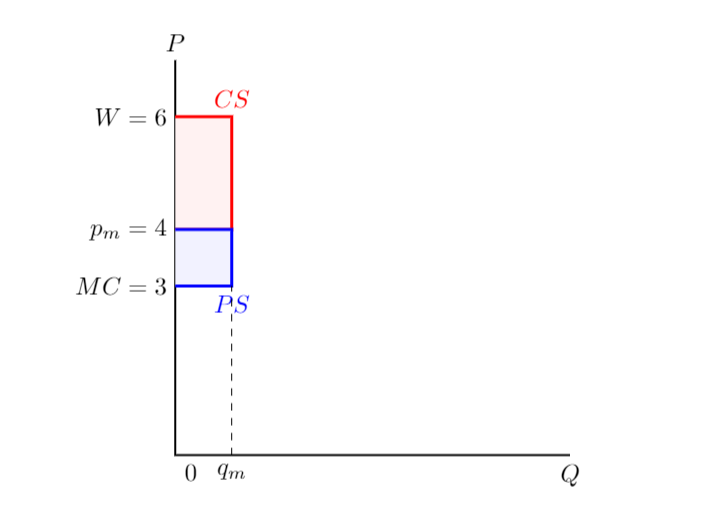Yes in this case producer surplus is $\\\$1$ and consumer surplus is $\\\$2$. Your calculations are thus correct.
Generally, producer and consumer surplus are not just willingness to pay minus market price times quantity, and market price minus marginal cost times quantity, but in this case they are.
Generally producer and consumer surplus are defined as area under the demand curve and above market price (for consumer surplus) and area under market price but above supply curve for producer surplus (see Mankiw Principles of Economics for undergraduate explanation or Varian Microeconomic Analysis for more rigorous info on the definition). More rigorously they are given as:
$$CS = \int^{q_m}_0 D(q) dq − p_mq_m $$
where $D(q)$ is arbitrary demand curve, $p_m$ is price consumers have to pay in the market, and $q_m$ quantity sold at the market.
$$PS = p_mq_m - \int^{q_m}_0 S(q) dq $$
where $S(q)$ is arbitrary supply curve.
However, in your special case you can use formulas $CS=(W-p_m)\cdot q_m$ and $PS=(p_m-MC)\cdot q_m$, because in your special case both CS and PS are rectangles and area of an rectangle is given by $ab$ and here the expressions in the brackets give you the hight of the rectangle ($a$) and quantity gives you the base of rectangle $b$ (you could still use the integrals that would give you same results but it would be overkill and waste time in this simple case). Graphically your problem looks like:

